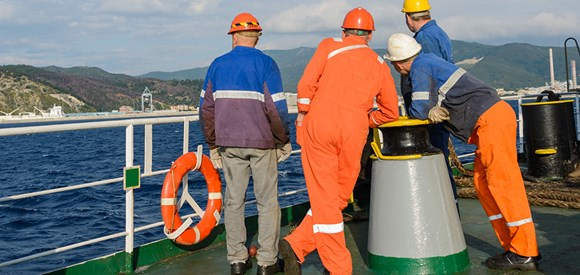Seafarers’ Access to Shore Leave Has Consistently Declined Since Pandemic

A new study among the providers of shore services for seafarers confirmed the concerns over the decline in access to shore leave and the time spent ashore by seafarers. Shore leave has been repeatedly identified as one of the concerns for seafarers, as experts cite the importance of shore time to crew welfare.
A survey of seafarers in May 2024 published by the World Maritime University highlighted the concern, one that has been repeated in the recent editions of the Seafarers Happiness Index provided by The Mission to Seafarers. In 2024, a total of 5,879 seafarers responded to the World Maritime University survey, with the result showing 25 percent had not had any shore leave over an average contract period of 6.6 months, and of those that did get ashore, nearly half (47 percent) reported spending less than three hours off their ship.
The finding in 2024 led the University to cite shore leave as becoming rare, brief, and in danger of extinction. This year, shore leave was among the top concerns in the Happiness Index report released last week.
The ITF Seafarers’ Trust did a similar survey this year with 96 responses from 83 organizations that provide shoreside services to seafarers in 25 countries. The finding is the same: shore leave is in decline.
The report shows a 61 percent decline in seafarers' spending time ashore in seafarers’ centers since the start of the pandemic in 2020. Further, respondents said that seafarers are spending less than two hours in their centers.
The ITF Seafarers’ Trust cites the reduction in manning levels, increased pressure on turnaround times, heightened security measures, and changes in the location and operations of ports as contributing to the decline in time ashore.
The report concludes that the welfare community shares the frustration of seafarers. They emphasize that the centers are an opportunity to relieve pressures and connect with people and communities. It has long been known that seafarers often use their precious time ashore to connect to the Internet and contact friends and family.
“There must be a consensus around defending seafarers’ right to shore leave, and proactive efforts made to facilitate it at every opportunity,” said Katie Higginbottom, Head of the ITF Seafarers’ Trust. “We must look to the regulators and the shipping industry to make sure that the operational and commercial factors,” to balance these issues with the welfare concerns, says Higginbottom.
Since the pandemic, the maritime industry has been vocal about the importance of seafarers’ welfare and wellbeing, however, the ITF Seafarers’ Trust warns that this is not translating into practices that facilitate shore leave. The report highlights that if these barriers continue unabated, the concern is of a vicious circle of decline in viable port-based welfare services due to lack of demand, and lack of demand due to loss of facilities compounding the problem.
They are calling for regulators to review the requirements around hours of work/rest and minimum safe manning to ensure that seafarers have sufficient time to take adequate rest, and that allows for shore leave. They also call on the shipping companies to ensure “humane conditions of labor.” They assert that all maritime stakeholders must work together and take a collective responsibility for creating conditions that facilitate access to shore leave.
“This report reminds us that seafarers’ welfare depends on shared responsibility. Together, welfare providers, regulators, and industry leaders must ensure that access to shore leave becomes the norm again, not the exception,” said Dr. Jason Zuidema, General Secretary, International Christian Maritime Association (ICMA), which represents the organizations operating service centers for seafarers around the world.
The full report is available online.
